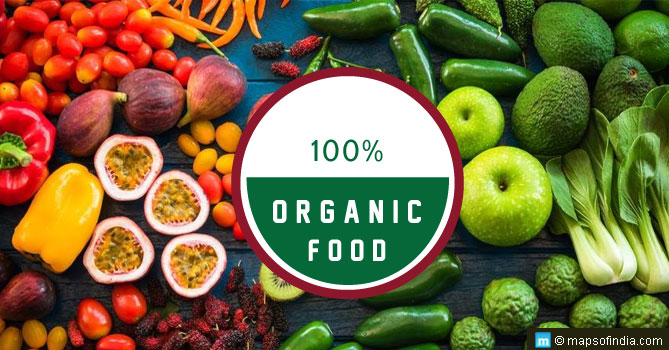The avocado fruit, native to South Central Mexico, and cultivated in tropical and Mediterranean climates throughout the world, has over the past decade gained tremendous popularity and commercial value because of its astounding nutritional value.
Often called the ‘Alligator Pear’ because of its shape (when cut into two) and colour as well as texture, avocado ranks among the top five healthiest foods of the world because of its unique qualities and high nutritional value. Unlike most fruits which are rich in carbohydrates, avocados are high in healthy fats. And they are tasty, too, with a very rich texture.
Nutritional Values of Avocado
Avocados are very nutritious and contain a wide variety of nutrients, including 20 different vitamins and minerals.
- The fruit does not contain any cholesterol or sodium and is low in saturated fat.
- The nutrients in avocado include Vitamin K, Folate, Vitamin C, Potassium, Vitamin B5, Vitamin B6, Vitamin E, small amounts of Magnesium, Manganese, Copper, Iron, Zinc, Phosphorous, Vitamin A, B1, B2, and B3 (Niacin).
- The carbs contained in the fruit are mostly fiber making it low-carb friendly plant food.
- An Avocado contains more potassium than a banana. Potassium, as we know, helps in controlling High Blood Pressure.
- The fruit is loaded with heart-healthy Monounsaturated Fatty Acids with the majority of the fat in it being oleic acid. Oleic acid is linked to having beneficial effects on genes linked to cancer.
- It is loaded with fibre which contributes to weight loss, reduces blood sugar spikes and is strongly linked to lowering the risk of many diseases.
- Eating avocados can lower Cholesterol and Triglyceride levels and can result in a decrease of heart disease risk factors.
- The fats in avocado help absorb nutrients from other plant foods.
- Avocados are loaded with powerful antioxidants that can protect the eyes. Eating avocados can help reduce the risk of cataracts and macular degeneration in the long run.
- There is limited evidence that avocado may be beneficial in preventing cancer.
- Avocados help in giving relief from arthritis.
- Last but not the least, avocados are delicious and easy to incorporate into the diet.
Note well that avocado leaves, fruit, seeds and bark may contain a toxic principle known as persin which may cause stomach upset in some dogs.
Tips on using Avocado
The yellow-green flesh inside the fruit is eaten, but the skin and seed are discarded.
- The fats in avocado are pretty resistant to heat-induced oxidation, making avocado oil a healthy and safe choice for cooking.
- While baking avocados can be used in place of fat because of its rich but healthy fat content.
- It can be used as a topping for soups and broth adding flavour, texture as well as nutrition to the dish.
- Nutritious smoothies, puddings, desert whips and countless other dishes can be made with avocados.
- When mashed and whipped, it makes for excellent and fresh baby food.
- Avocados can be used to garnish salads.
- It can also be used as a moisturiser for the face.
How to Ripen Avocados
Avocados do not ripen on the tree. They ripen after they are harvested. Here are a few tips on how to ripen them:
- Place unripe avocados in a brown paper bag with an apple or banana for two-to-three days at room temperature until they are ripe.
- If the avocado has already been cut and not ripe, apply some lemon juice and keep it sealed in a container in the refrigerator. This will stop it from going brown and mushy till it ripens.
- Ripen avocados by wrapping them in tin-foil and baking it in the oven at 200°F oven for 10 minutes.
- When ripe avocados will yield to gentle pressure, it means they are ready to eat.
Growing Avocados Indoors
While avocados are originally trees that grow as high as 80 ft, you can grow the dwarf version indoors at your home too.
- Remove the pit from a ripe avocado and rinse off any excess flesh.
- Poke the pit with a network of toothpicks.
- Keep the pit in a glass of warm water.
- The pit should dip an inch or so into the water at the dented or dimpled end.
- Place the glass in bright light.
- The temperature should be 18 degree Celsius.
- Keep changing the water frequently.
- Once the pit produces roots it will fill much of the glass.
- Stems and leaves will also sprout.
- When the roots fill the glass, move the sprouted pit to an unglazed terra cotta pot.
- The pot should be 10 inches across and twice as deep as the roots.
- Use a potting mix with compost blended with sand for a loose, fast-draining composition.
- The plant will need bright light to grow well.
- Initially, keep removing excess growth to promote a bushier, stronger plant.
- Indoor plants need cool nights to force blooming and fruiting.
- They can take up to ten years to get to fruiting stage.
- Mostly indoor dwarf versions of avocados do not bear fruits but even if they do, the flavour is not as good as those commercially produced from rootstocks.





